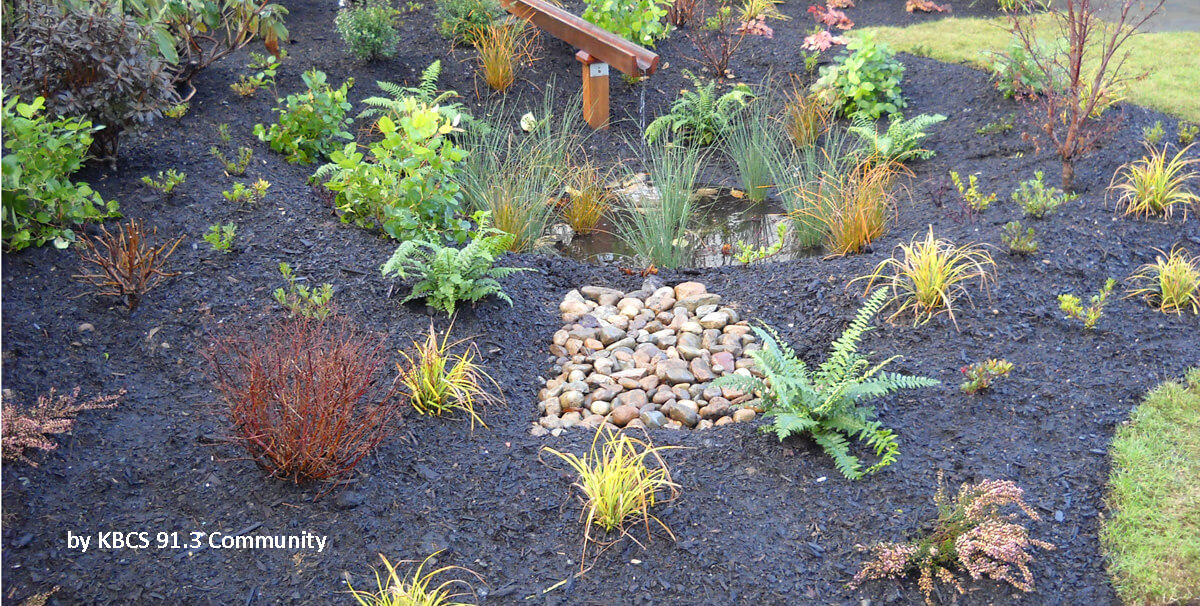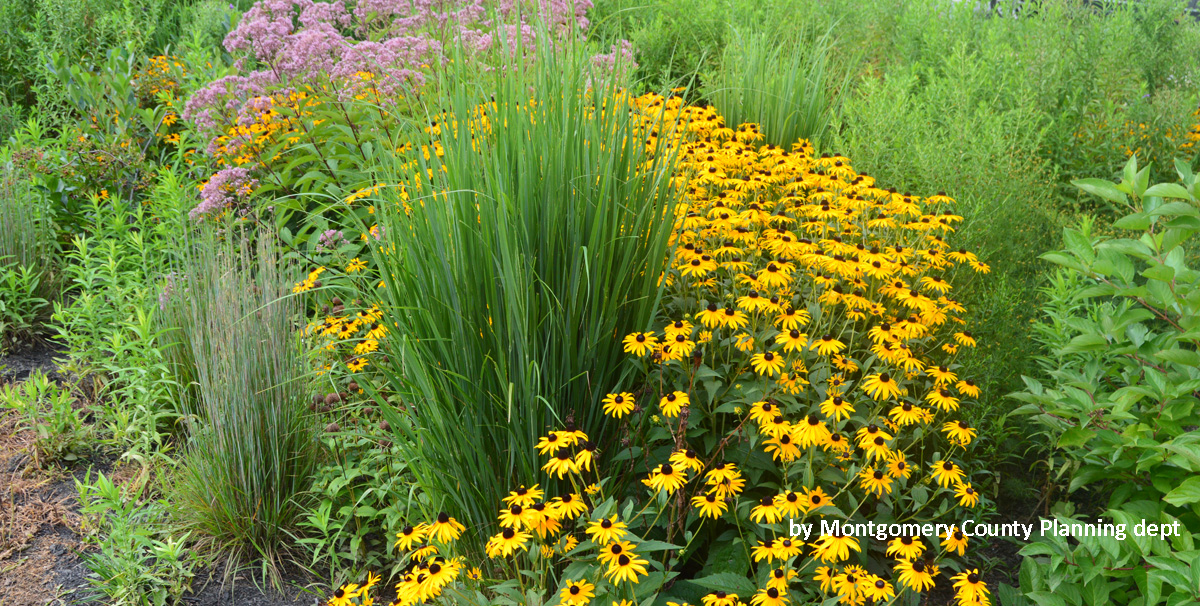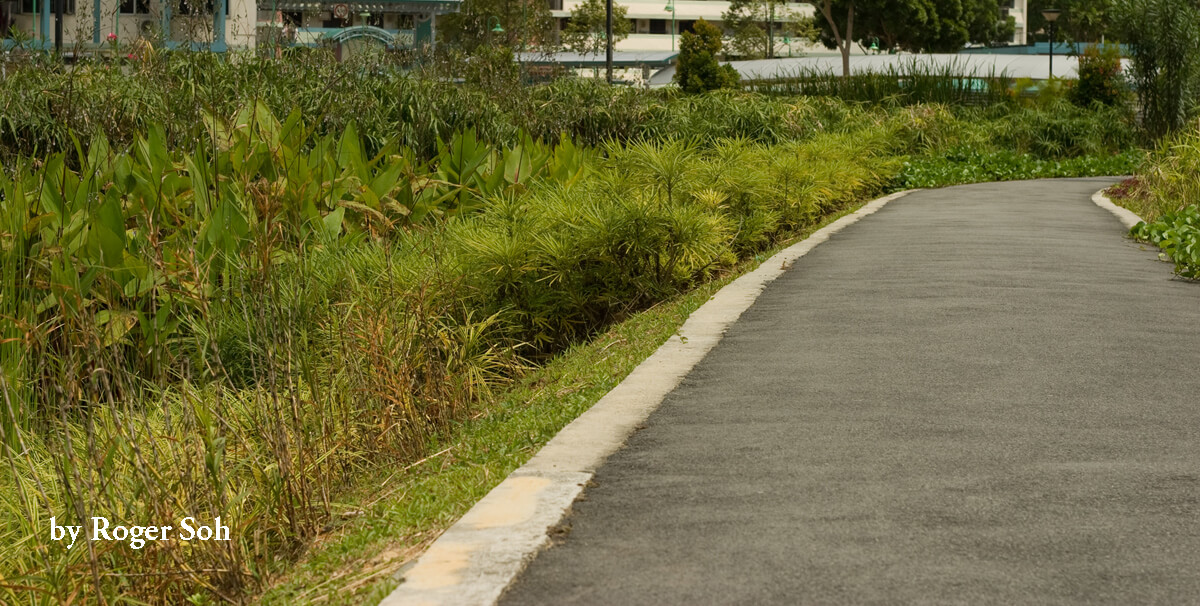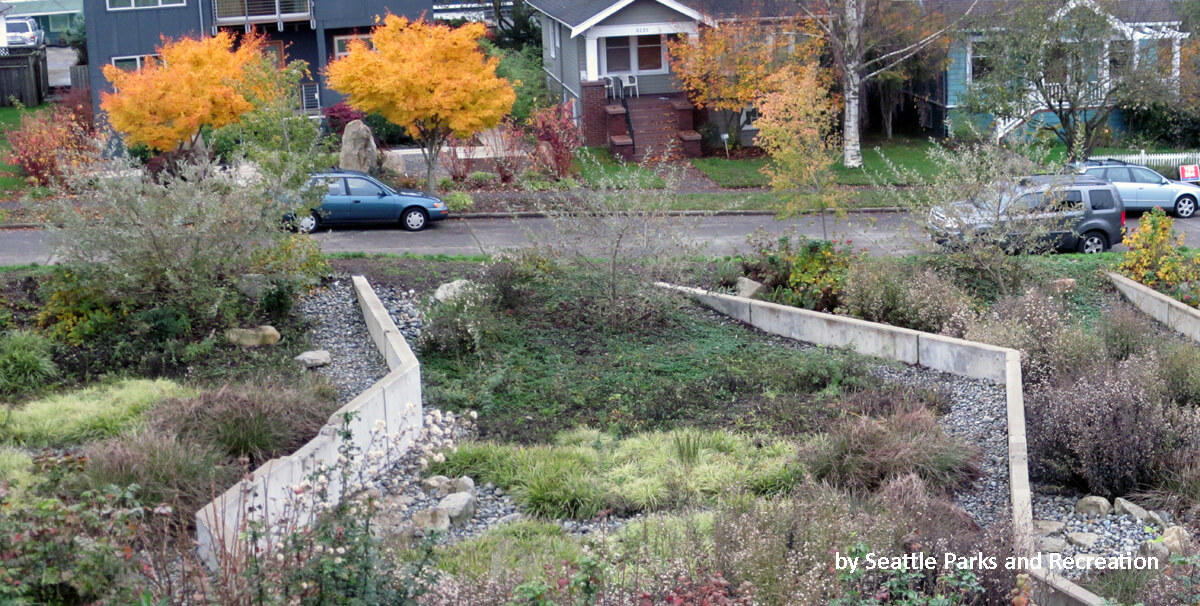If the term RAIN GARDEN brings an image of a weedy bog teeming with scores of mosquitoes and other unpleasant flying insects to your mind, then it’s time to update and edit that picture!
Nearly 70% of all water pollution is tied directly to pollutants carried by rainwater runoff ( figures pulled from EPA data). Every time it rains, water that streams off of driveways, sidewalks, roofs or other hard surfaces picks up specks of chemicals, fertilizers, salts, petroleum based products as well as bacteria and harmful microbes from animal and human waste. The tainted water makes its way into our stormwater systems and eventually flows into our streams, rivers, wetlands, lakes and oceans causing problems that range from algae blooms and fish kills to serious health issues, especially for children.
Rain gardens, which ironically can be dry much of the time, are gently sloping or bowl-shaped, relatively shallow gardens. They are designed to hold, percolate and filter stormwater, removing harmful pollutants from rainwater runoff, usually within the first 12 - 48 hours after a heavy rain. (Not nearly enough time for pesky mosquitoes to hatch.) Areas between the sources of runoff -- think roof or driveway -- and the water’s final destinations -- patches of standing water or curbside gutters -- are ideal spots for rain gardens. To prevent future problems, gardens should be placed at least 10 feet away from the home’s foundation. Also, avoid planting them near underground utility lines. For a more complete discussion on constructing rain gardens, click this link.
Because they are well adapted to the environment and have deep root systems capable of absorbing and retaining moisture, native species are highly recommended for rain garden plantings. Plants sitting in the lowest areas should be species that need more moisture, while those on the higher levels are ones that typically tolerate less water. Interspersing grasses or sedges along the slopes helps to control erosion while the garden is becoming established.
Since their inception in 1990, the look of rain gardens has changed. In the past, fewer varieties of native plants were available to the consumer. Today’s emphasis on sustainability however, has opened up a myriad of beautiful == and appropriate -- choices. While we still love our previous rain garden plant suggestions (See: https://www.embassylandscape.com/blog/the-best-of-the-best-perennial-plants-for-rain-gardens ), we have a few more to add to the list.
Cardinal Flower
Lobelia cardinalis

If you want to throw a party for hummingbirds and butterflies, add Cardinal Flower to your rain garden! The showy, scarlet, rose-colored or white flowers, which appear in July and continue until September, are magnets for migrating ruby-throated hummingbirds and spicebush swallowtail butterflies. Spikes of flowers, blooming from the bottom up, often reach 4 to 5 feet in height. Cardinal Flower needs consistent moisture and prefers light shade in the hottest parts of the summer. Keep the ground around it free from mulch to encourage self-seeding. Deer and rabbits both tend to avoid Cardinal Flower. Hardy in Zones 3 to 9.
Blue Lobelia
Lobelia siphilitica

Just when you need the relief the most, a touch of cooling blue appears when Blue Lobelia,or Blue Cardinal Flower, is added to the rain garden. Blooming in July to September, the 3 foot tall Blue Lobelia appreciates a bit of shade in the hottest parts of the day. Like red Cardinal Flower, Blue Lobelia prefers consistent moisture and even tolerates wet feet. Because it is a relatively short-lived perennial, periodically pulling and dividing clumps will prolong its life span. Deer seem to avoid it; bumblebees love it. Hardy in Zones 4 to 9.
Blue Arrow Rush
Juncus inflexus

The perfect edge plant for the rain garden, Blue Arrow Rush not only helps control erosion, but does it with beauty and style! Varying in height from 1 to 3 feet, Blue Arrow needs consistent moisture in a full sun location. It is slow to establish, but once entrenched, it spreads slowly by rhizomes. It also self-seeds. In colder climates, it may die back to the ground in winter, but will re-emerge in the spring. Hardy in Zones 4 to 9.
Joe Pye Weed
Eutrochium purpureum

An imposing addition to the rain garden, Joe Pye Weed can reach heights up to 7 feet. Flowering best in full sun, it also does well in part shade. Fragrant mauve pink flowers, favourites of butterflies, begin showing in July and often continue blooming well into September. Blooms are replaced by unique seed heads which last well into the winter. Joe Pye Weed is a moisture loving plant that will tolerate clay soil. Once viewed as a roadside nuisance, Joe Pye Weed is now recognized as a native beauty and a pollinator favorite.. Hardy in Zones 4 to 9.
Swamp Milkweed
Asclepias incarnata

Less well known than its “cousin” Butterfly Milkweed, Swamp Milkweed deserves the same recognition. Also a host plant for Monarch butterfly larvae, Swamp Milkweed is a moisture loving, full sun plant. It typically reaches 3 to 4 feet in height and blooms with clusters of fragrant pink, nectar rich flowers in July and August. Swamp Milkweed has an especially long taproot and does not appreciate being moved. It is late to emerge in spring, waiting for the ground to warm. Hardy in Zones 3 to 6.
Copper Iris
Iris fulva

This little beauty, native to swamps and wetlands, is a must for today’s rain gardens, gracing the garden with showy copper colored blooms in May and June. Hummingbirds love this iris and are fun to watch fighting to claim the nectar for themselves. Standing 2 to 3 feet high, Copper Iris grows well in full sun or part shade. It tolerates wet feet, clay soil and periods of dry soil. Deer tend to avoid Copper Iris. Hardy in Zones 5 to 9, but may need some winter protection in the upper regions of Zone 5.




